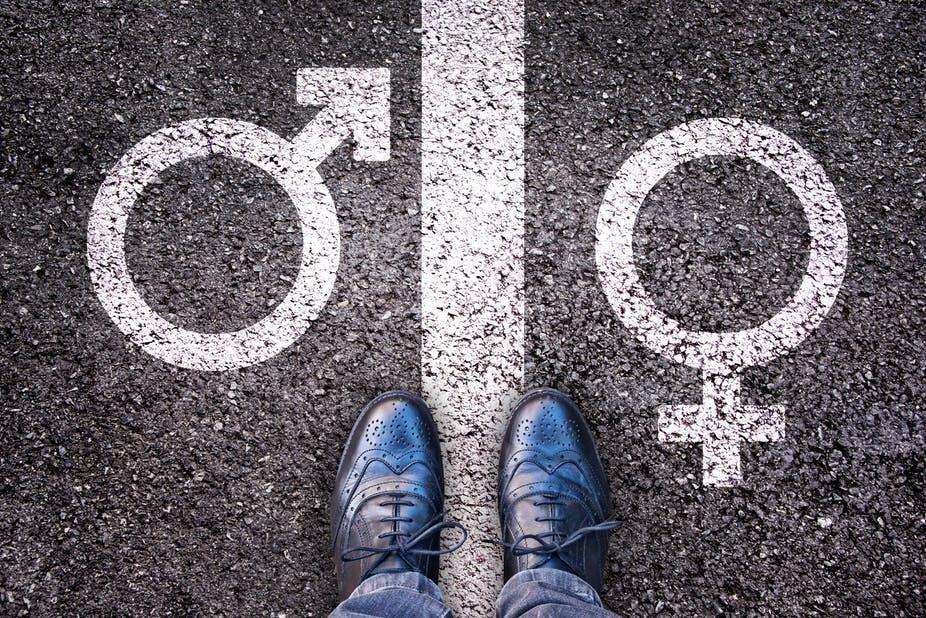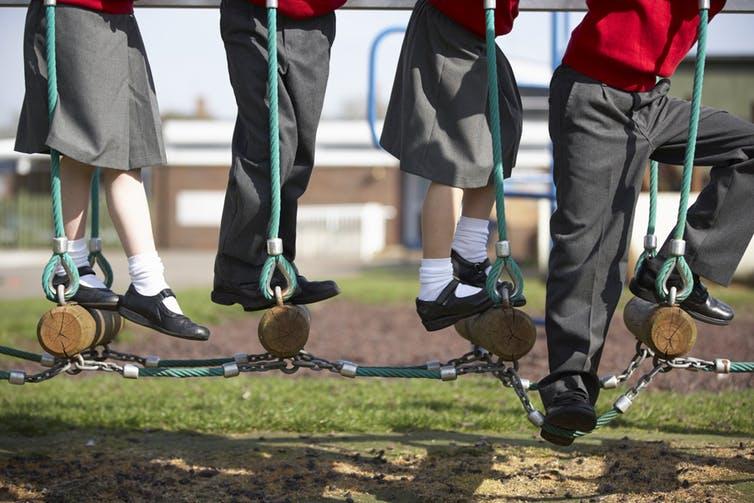Almost half of trans pupils have attempted suicide – schools must do more to challenge gender stereotypes
It’s believed that challenging them early on means children who don’t conform will be less likely to experience bullying

A recent report by the lesbian, gay, bisexual and transgender charity Stonewall, found that 80 per cent of transgender youth have self-harmed, and 40 per cent have attempted suicide. So the Church of England’s recent guidance to its schools, urging teachers to allow pupils to “explore the possibilities of who they might be without judgement”, is very welcome.
The document advises teachers to allow pupils to explore gender creatively, and not negatively evaluate behaviour that doesn’t conform to stereotypes. This includes letting children dress up in typically “female” or “male” clothes, such as tutus or tool belts, whatever their gender.
The guidance has been welcomed by organisations supporting trans rights, such as Gendered Intelligence and Stonewall. It’s believed that challenging gender stereotypes early on means children who don’t conform to them will be less likely to experience bullying.
But the Church’s guidelines have also been criticised for pushing a “transgender agenda”, in the same way schools introducing kids to alternative sexual and gender identities have been. Recently, parents even removed their son from a school in the South of England, after it allowed another child to express their gender freely.
As part of my research into LGBT identities, I’ve worked with young transgender people. And while they don’t often have a voice in debates surrounding how children should be spoken to about gender, they’re the ones who best understand what they need.

In 2015, I interviewed a number of young people who again and again told me they just want to be accepted for who they are – as Zack, who was 15, explained: “Just respect it, even if you think it’s a phase – how are we supposed to work out who we are, if you’re contradicting who we’re trying to be?”
Access to support was a main hurdle for all the young people in my study. They couldn’t find the information they needed at school, and didn’t know who they could talk to – 17-year-old Dan explained to me how it took him so long to find professional help that he considered suicide.
Occasionally, LGBT issues were discussed in school, but as 19-year-old Kyle put it: “Schools only care about the LGB side – they always forget the T.”
The young people I spoke to also told me that, throughout school, they never heard anyone talk about trans issues or identities. Effectively, in school, trans people didn’t exist. Little wonder then that 19-year-old Bella felt trans kids were treated as freaks by their peers. She told me how she was often called “tranny” and “she-male” and received death threats on social media.
Zack also talked about the impossible position he was in whenever he had that most basic need – to use the loo. He was regularly intimidated by boys who wouldn’t let him use the “male” toilets at school. But if he tried to use the “female” toilets, he’d be threatened. Once, a group of girls said they’d stab him if he came into the “wrong” toilets again.
Maybe if gender was discussed more openly from a young age, trans kids wouldn’t be seen as being so “different”. Rather than confusing children who aren’t transgender – as the critics fear – giving school pupils more awareness and knowledge could actually make them more compassionate.
Some schools are already working towards the goal of supporting students who don’t conform to gender norms – including an all-girls school in London which now allows trans or non-binary pupils to be known as such. Similarly, Cornwall Council has provided transgender guidance to all schools in the county since 2012.

Even though such guidelines didn’t exist at the schools the young people in my study went to, adults did try to help them. Unfortunately, though, they often got it wrong. Take Kyle’s teacher as an example. He announced to his class that Kyle was trans, saying: “If anyone’s got a problem with that, come and see me.” Kyle felt humiliated, and that he’d been outed to his peers, who might not otherwise have realised that he was transgender.
To properly support transgender and non-binary youths, then, more needs to be done to understand what they need. Guidelines sent to schools are a step in the right direction, as they can encourage teachers not to reproduce gender stereotypes, and advise them on creating safe, gender-neutral spaces. But this isn’t enough on its own.
After all, when I asked the young people to define transphobia, Dan said: “It’s often just people getting things wrong because they’re uneducated about it.”
And this makes it clear it’s not just children in schools who need education in this area.
All names have been changed.
Lucy Jones is an assistant professor in sociolinguistics at the University of Nottingham. This article was originally published on The Conversation (theconversation.com)
Join our commenting forum
Join thought-provoking conversations, follow other Independent readers and see their replies
Comments